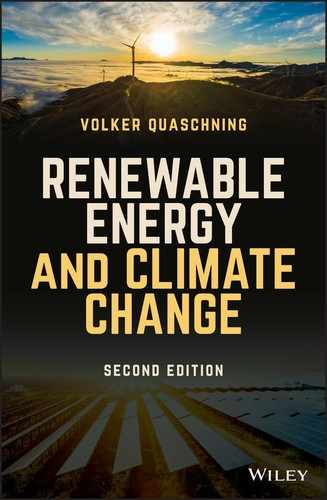Preface to First Edition
The problems of energy and climate change have finally ended up where they belong: at the heart of public attention. Yet the connection between energy use and global warming is something we have been aware of for decades. In the late 1980s the German federal government declared climate change to be one of its main goals. At the time numerous experts were already calling for a speedy restructuring of the entire energy supply. Despite the government's declaration, the official response was, at best, half-hearted. But the climate problem can no longer remain on the back burner. There is a growing awareness that climate change has already begun. The prognosis of the researchers studying what is happening to our climate is extremely serious. If we do not pull the emergency cord soon, the catastrophic consequences of climate change will far exceed even the power of our imagination. The fact that we have awarded the Nobel Peace Prize to Al Gore, the US climate activist, and to the Intergovernmental Panel on Climate Change, both of whom have been urgently warning of the consequences for years, could be seen as a sign of helplessness rather than optimism about our ability to solve the problem.
Just as climate change threatens our environment, new records for rising oil and natural gas prices show that current supplies will not last long enough to cover future demand, therefore, alternatives must be found as soon as possible.
And yet the solution is a simple one: renewable energy. Renewable energy could completely cover all our energy supply needs within a few decades. This is the only way to end our dependence on energy sources like oil and uranium – costly both economically and environmentally – while satisfying our hunger for energy in a sustainable and climate-friendly manner.
However, for many, the route required to reach that goal is still far from clear. Many people still do not believe renewable energy offers a viable option. Some underestimate the alternatives to such an extent that they predict a return to the Stone Age once oil and coal supplies have been fully depleted.
The aim of this book is to eliminate these prejudices. It describes, in a clear and intelligible style, how the different technologies work, which are now available, and the potential for implementing these various forms of renewable energy, with the focus on the interaction between the different technologies. By showcasing some examples of how Germany has tackled this issue, we can show the forms that sustainable energy supply can take and how it can be implemented. However, this book is designed to show all readers, no matter where they live, how they themselves can make a contribution towards building a climate-compatible energy economy. In addition to explaining different energy measures that individuals can undertake for themselves, this book provides concrete planning aids for implementing renewable energy systems.
This book has been consciously written to offer essential facts to a broad spectrum of readers. It introduces the different technologies to anyone new to the subject, while at the same time, providing interesting background information to those with some existing knowledge.
The book has been translated from the original German version. It is an important addition to my technical work ‘Renewable Energy Systems’, published by Hanser, and also supplements my many lectures on the subject. It is clear from the high level of interest generated by this technical book, now in its sixth edition in German and translated into both English and Arabic, that there is a real need for more literature on the subject of renewable energy. This book should fill this gap and provide support in the development of sustainable energy supply systems.
Berlin, 2009
Prof. Volker Quaschning
